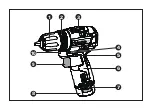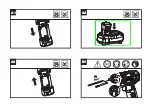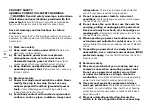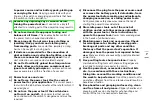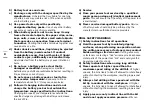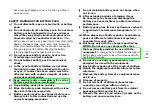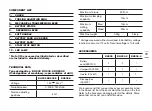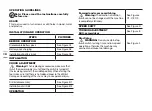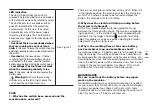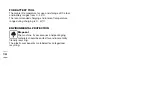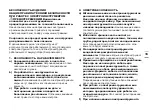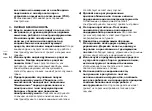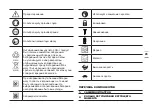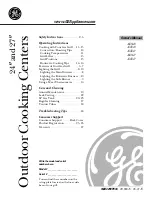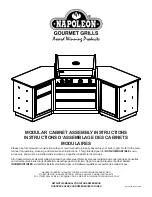
8
5) Battery tool use and care
a) Recharge only with the charger specified by the
manufacturer.
A charger that is suitable for one type
of battery pack may create a risk of fire when used with
another battery pack.
b) Use power tools only with specifically
designated battery packs.
Use of any other battery
packs may create a risk of injury and fire.
c) When battery pack is not in use, keep it away
from other metal objects, like paper clips, coins,
keys, nails, screws or other small metal objects,
that can make a connection from one terminal
to another.
Shorting the battery terminals together may
cause burns or a fire.
d) Under abusive conditions, liquid may be ejected
from the battery; avoid contact. If contact
accidentally occurs, flush with water. If liquid
contacts eyes, additionally seek medical help.
Liquid ejected from the battery may cause irritation or
burns.
e) Do not use a battery pack or tool that is
damaged or modified.
Damaged or modified
batteries may exhibit unpredictable behaviour resulting in
fire, explosion or risk of injury.
f) Do not expose a battery pack or tool to fire
or excessive temperature.
Exposure to fire or
temperature above 130 °C may cause explosion.
g) Follow all charging instructions and do not
charge the battery pack or tool outside the
temperature range specified in the instructions.
Charging improperly or at temperatures outside the
specified range may damage the battery and increase
the risk of fire.
6) Service
a) Have your power tool serviced by a qualified
repair person using only identical replacement
parts.
This will ensure that the safety of the power tool
is maintained.
b) Never service damaged battery packs.
Service
of battery packs should only be performed by the
manufacturer or authorized service providers.
DRILL SAFETY WARNINGS
1 ) Safety instructions for all operations
a) Hold the power tool by insulated gripping
surfaces, when performing an operation where
the cutting accessory or fasteners may contact
hidden wiring or its own cord.
Cutting accessory
or fasteners contacting a “live” wire may make exposed
metal parts of the power tool “live” and could give the
operator an electric shock.
2) Safety instructions when using long drill bits
a) Never operate at higher speed than the
maximum speed rating of the drill bit.
At higher
speeds, the bit is likely to bend if allowed to rotate freely
without contacting the workpiece, resulting in personal
injury.
b) Always start drilling at low speed and with the
bit tip in contact with the workpiece.
At higher
speeds, the bit is likely to bend if allowed to rotate freely
without contacting the workpiece, resulting in personal
injury.
c) Apply pressure only in direct line with the bit
and do not apply excessive pressure.
Bits can
Summary of Contents for KU230
Page 2: ...6 7 5 4 2 1 3 8 10 9 ...
Page 3: ...2 1 1 A1 A3 B1 A2 ...
Page 4: ...1 1 2 C2 C1 C3 B2 ...
Page 5: ...D F 1 2 4 20 16 2 4 6 8 18 20 1 2 4 6 8 E ...
Page 26: ......
Page 27: ......


